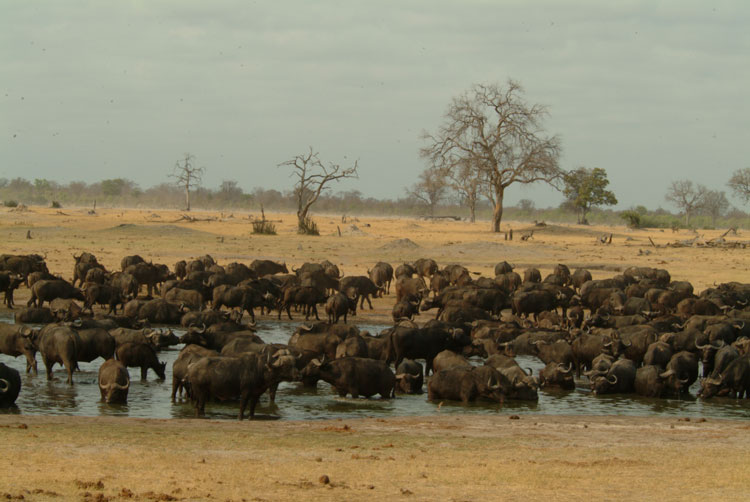
The land that was once the home of the wandering Bushmen is one of today’s most renowned national parks. Thousands of buffaloes and elephants walk the land. Lions are the common attractions, while it is almost impossible to catch a glimpse of the leopards and rhinoceroses. More than 100 different species have been recorded to live in this sanctuary.
Throughout the park are shallow pans that assist dry season game viewing. Elephants are provided by the natural salt-licks with their favorite mud holes where they can wallow while 60 manmade water holes provide them with their much needed water during winter since everything begins to dry up. There are a number of water holes with raised sides made of wood that allow visitors to observe animals for long hours.
Hwange National Park is also a paradise for bird watchers because over 400 species of birds are found here, specifically during the wet season. The biggest of these species is the Kori Bustard that dwells on the ground. It will only take flight when it is of extreme necessity. The beginning of the mating season is marked by abundant food marks, red bishops model their astounding scarlet plumage, and crowned cranes flounce in a comical dance.
The months from July up to September mark the dry season. During this time, it can be really hot during the day but on winter nights, the temperature can drop very low, sometimes even below the freezing point. The animals, during this season, come together to assemble around the manmade water holes because without these, they would surely die of heat and thirst. During the rainy season though, the vegetation flourishes because big cumulus clouds shower the land with the summer rainfall. During this time is when birdlife is most astonishing.

Hwange National Park

No comments:
Post a Comment
Feel free to place you thoughts here